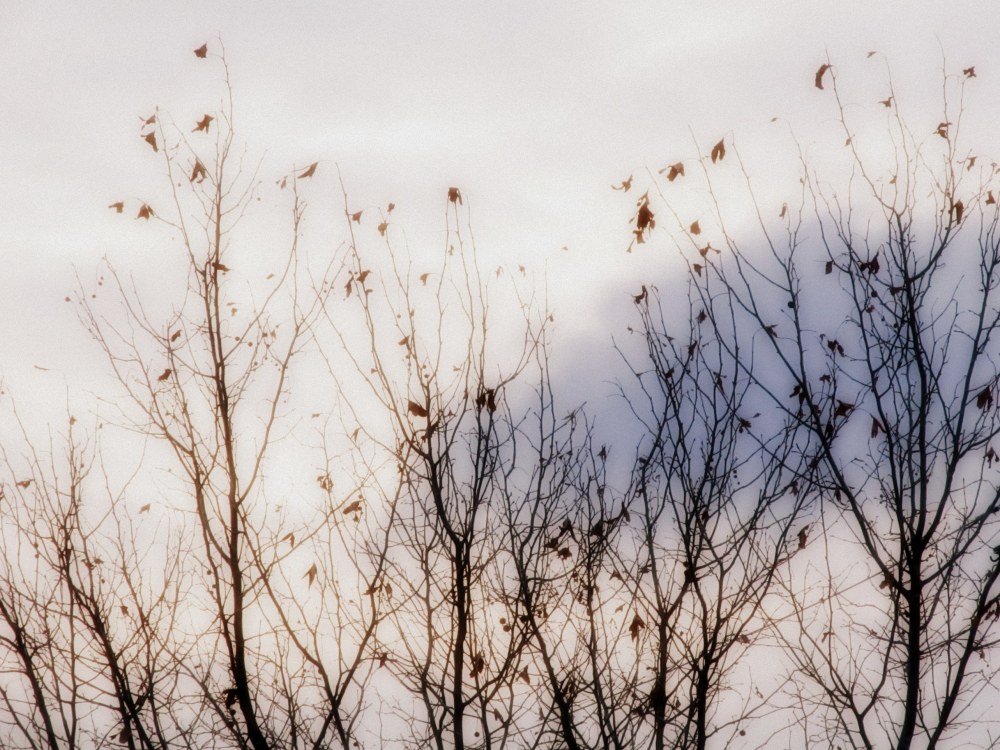Whoa, there. Easy. Just breathe for a minute. Slowly.
Taste the air, sense it. Feel it in your lungs.
Come away from the rest of the world, and focus. One word at a time. Don’t skim for meaning. Enter fully into this world, where a raven flies past, rasping, and Western kingbirds chip-chip-chip from the neighbor’s sycamore. Phoebes whistle and blow raspberries from the roof. Someone’s nestlings begin cheeping with high, hungry urgency.
The sky glows azure, its brilliance not yet scalded by the sun. The breeze is cool. Sunny angelitas nod on long stems, and feather grass waves lazily back. Chamomile scents your fingers where you ran them across the fuzz and froth of flowers. Eyes closed, from the depths of a cushioned seat, you raise your mug and for a moment drink in the rich, dark aroma of coffee. You take the first sip.
This is the world to live in right now. Let the words of it slow you down.

Words do more than lug dictionary meanings around. They open doorways to transformation. The French poet Stéphane Mallarmé, at the end of the 19th century, grieved over words used like money—coins exchanged for the product of meaning. News stories, listicles, memes, plot-driven genre fiction: transactions offering nothing beyond the surface. Their words are not symbols evoking deep essence or truth.
I have been reading. Julie Rehmeyer’s memoir Through the Shadowlands, Laura Hillenbrand’s Seabiscuit, Paul Tomkins’ thriller The Girl on the Pier. All are marked by rich descriptions, with unusual depth of detail. These authors have observed the world with attention; they have taken time.
Or time has been handed to them—the time that is gift and curse to those forced out of the mainstream by illness. All three authors have been ill for years with ME/CFS. No matter how quickly the books’ events move, their sensory worlds unfold at a gentle pace—a walking pace with rests.
A prairie lizard darts onto the patio and halts to do some pushups. He shows up for work most mornings about this time. With his broad, brown back and pale ochre and gray stripes, he blends into the garden’s grasses and stones and dried leaves. Even on concrete he looks like another dappled shadow. I’ve just watered, and his long tongue flicks out to lick droplets from a leaf.
I recognize my own work in these authors’—not its merits, but its rhythms and details; the unfolding of a rich, sensory world that is the deep context for events. I worry about that: the burden my writing’s pace might place on readers. “Tl;dr” is the kiss of death for essays. I say this not seeking re-assurance but to think how best to convey my ideas.
My ideas are slow ideas. They keep emerging the same way, perhaps because I keep seeing the world the same way—at a gentle walking pace, with rests.

In the dense, creeping greenery of thyme-leaved speedwell, a beetle struggles on its back. It is missing a leg; one side looks maimed. Just as I decide to end its suffering I hear a flutter of wings. A sparrow lands beside it. She is all tans and fawns and duns, like branches waving in sunlight, like sunlight rippling on a river bed. Every muscle taut, she looks at me, at the beetle, back at me. I begin to suspect just whose nestlings were crying with hunger. Quick as a spark she grabs the beetle, many times the size of her beak. Then she’s gone.
What is the message of this slow unfolding? In being true to the world I see, in not trying to “pass” by aping the fast pace of the healthy, what do I hope to accomplish? Am I a small child lagging behind bigger, faster ones whining, “Hey, wait for me”? Am I proud of my pace, self-righteously scoffing at a speed-driven world where rest is snatched frantically after work and errands and meetings and drop-offs and chores and date-nights out? Or am I sharing slowly because I see good things in slowness and wonder whether you might, too?
I wonder whether my intent matters—the words and pace are the same, no matter the attitude behind them. I wonder what your perspective is. Impatient? defensive? appreciative?
I ask because I am trying—may always be trying—to understand what it means to be permanently out of rhythm with the world; to understand Disability as a personal experience, a social status, and as a movement.
To be Disabled is to have a recognized, legally protected status unavailable to the “merely” ill. To be Disabled is to have the legal right to participate fully in the life of your community: the right to have barriers to participation removed, whether voting kiosks that require standing, ballots with tiny print, stairways, gargantuan parking lots, PDF’s unscannable by text-to-voice readers, or heavy doors. These barriers are erected by the Temporarily Able-Bodied (we are all temporarily able-bodied, no?), who may not recognize them as barriers.
What does the world hear when we ask to have barriers removed? Does it hear us whining for everyone to wait up, to inconvenience themselves for an “unimportant” minority? Does it hear us judging the temporarily able-bodied in righteous victimhood? Does it hear us as fellow humans whose perspective matters?
Are rights determined by what you hear, or by our intentions? Do they depend on your belief? your emotional reaction? When are rights objective truths—inalienable?
I have come across this idea often lately: “My biggest problem is not my illness/disability. It’s the obstacles set up by the well/able-bodied.” One obstacle is time. The resistance to offering extra time, different time, to the wheelchair user getting on a bus; to the woman with arthritis fumbling at checkout for her credit card; to the child with autism’s intense, hours-long focus on a single project; to the deaf person reading movie subtitles and laughing out of sync; the student with dyslexia needing extra time on a test; the person with illness needing pauses to rest.
How you inhabit time is a measure of certain abilities. The rhythms of disability are often manageable on their own, but they become unmanageable in a world that doesn’t hear them.
Over the steady pulse of cricket song I hear a whistle, like fireworks before the bang, over and over. A tiny body nosedives from a cloudless sky, pulls up, dives again. Quick eyes can follow the motion from one end of the U to the other. For their weight, hummingbirds accelerate into a dive faster than fighter jets.
This little fighter pilot is courting. After a few more U’s, he starts zig-zagging near one branch of the desert olive. Ah, there’s the female–an iridescent patch among the greenery. Her creamy throat flashes as she turns her head to watch the male.
He begins again—great, diving U’s and short zigzags. Then he stops on a branch to rest, and I have to laugh. To these high-speed bullets of hunger and irritation, rest is critical: so critical that even when showing off for a lady, the gentleman can take five. And the lady will wait to be dazzled, because she understands. It seems to be a point of honor among hummingbirds—to wait out another’s weariness, to respect the need for rest. I have witnessed two fighting males stop mid-battle for a breather, and resume a few minutes later.
The male begins diving again. The female lifts off and joins him for one breathless moment midair. Then they both wink out into the ether.

Even as the youngest child I seldom had to ask my family to wait up. We hiked every weekend in the Colorado Rockies, and my family would match my pace. “You’re only as strong as your weakest link,” my dad would say.
I didn’t relish being the weakest link, but Dad meant no judgment. He simply spoke truth, that a child of seven is not as strong as children of eight and fourteen. I am glad my small legs did not have to keep pace with my six-foot tall brother’s long strides. Was it more fair for him to reduce his stride to mine? My parents chose a third way. Instead of making time or miles, we made up games. We explored the niches of empty pine cones and found faces in juniper trunks, listened to aspens rustling and pine trees rushing. We rated thunderclouds and leaped over roots and stones. We learned a lot about wildflowers.
If my parents had had different priorities, I would have learned different lessons: to see littleness as a challenge to overcome; to push myself to be everyone’s equal; to achieve quantifiable goals—to summit the mountain—at all costs. Those might have been good lessons.
Instead we learned about family unity, creativity, give and take. We learned to relax, play, observe and explore, to appreciate. We learned the freedom of enjoying where you are. (And we learned an awful lot about wildflowers.) What my parents taught us in embracing the “weak link” was a whole other source of strength. It was a third way—not a reversal of the values of competition and accomplishment but a completely different set.
The strength of harmony looks much different than the strength of achievement. It is a beautiful strength; it unfolds slowly.

An orb-weaver has spun a web between two uprights of a tomato cage. The spider is smaller than my little fingernail; its web is delicate, fluttering in the breeze, shining in the sunlight. Each angle and join, the radiating symmetry—it’s perfect. By noon it is always gone. Every morning, though, it has been re-spun in a slightly different place. Watering the containers is a fraught enterprise, and when I bump the tomato cage it bounces like a spring. The spider remains steadfast at the center of its web. I only see orb weavers for a few weeks’ mornings each summer. I don’t know what they do with the rest of their lives.
I wonder whether rhythm—salient patterns moving within a larger, recurring timespan—can indicate relationship. Watching the orb weaver, its rhythms of spinning and dismantling, its seasonal appearance and disappearance, I see how tangential our lives are. The spider has its own being, with its own integrity and center; I am largely irrelevant to it. The world in which I am the center has limits. Still, our separate rhythms intersect, and we are interdependent, too. I provide the flowers and water that attract a spider’s prey; the spider feeds and keeps my garden healthy.
So many rhythms: the slow, years-long branching of trees; the steady, weeks-long chirping of crickets; the leisurely, days-long opening of flowers. The halting movement of injury; the quick, tense flight of a bird both predator and prey; the 1,000 beats per minute of a hummingbird heart; the unmoving spider in its web; the woman at rest in the Adirondack chair.
So many relationships: provider and receiver, predator and prey, independence and interdependence. No one rhythm is the center. I suppose that’s just logic. An ecosystem, with its many niches, pre-supposes many life rhythms to fill them.

Daylight behind him haloed his white hair. A trim figure in sky-blue polo shirt and shorts, he looked fit still, despite stooped shoulders. But the card-reader confused him, and the cashier’s explanation didn’t help. Dementia kept him from following her words. Seeing all of us and our grocery carts waiting, he stammered an apology. The cashier explained the reader again, slowly, with different words, one step at a time, patiently, cheerfully. No good. The man grew more distressed at slowing us down, despite our reassurances. He did not seem to expect his rhythm to be accommodated. Like the child on Camazotz, he interrupted the dominant rhythm of speedy efficiency, and he expected punishment as if for a sin, to meet rudeness and impatience.
Yes, I wonder whether rhythm can indicate relationship. Certainly our relationship with time. Do the rhythms of our days suggest that we try to control time? Or do we engage with it? Do we consider it our own, to divvy up as we see fit, or do we participate briefly in the ongoing flow of ages? How many rhythms do we believe time can contain?
Rhythm may show our relationship with words. Maybe we skim quickly for meaning, looking for bullet points we can use. Or we slog through technical information, seeking to master it. Or maybe we let words carry us into a whole other time, where images connect back and forth and the very sounds delight us, where we live different tempos as they unfold. Maybe we are discerning readers and adapt our pace to the text.
The time we enact when we read can enlarge our inner world. It can transform us. Or we can approach all words the same way—like money exchanged for something we can use.
This matters.
How we approach one relationship can indicate how we approach others. Our relationship to time can mirror how we relate to people—maybe not as individuals, but as a whole. The idea that time is money—something to be capitalized on to produce value—is dangerous. It means that the speediest, most efficient users of time are worth the most. This attitude may be subconscious (the man with an angel’s hair, distressed by his slowness, as if he had no right to his own rhythm), such a given that we accept it unthinkingly. It may not cause direct harm one on one. It can, however, lead us to devalue different rhythms, to resent those like the disabled who interrupt our speed or remind us that time is not ours alone. That our rhythms are not the center of the ecosystem.
The dominant rhythm of speedy efficiency is not just a reality of modern life to be (laughingly) bemoaned. It is a structural evil: a culture-wide, unquestioned assumption that devalues a class of human beings for things they cannot control. Those who perpetuate structural evil, even if they commit no direct harm, are still complicit in it.
If this is true, then a less controlling, efficient approach to time is not a “nice idea,” like eating more vegetables. It is not about enhancing your quality of life, but ensuring others’ right to participate in community at the rhythms their minds and bodies give them. It is a moral imperative.
“Time is money” is a cultural fabrication, not a universal truth. A less exploitative approach to time might yield a different strength than the strength of speedy efficiency.
It might be beautiful.

My neighbor is having a party—his birthday again already. His small garden glows with fairy lights as dusk deepens. A bossa nova eases its way into quiet conversation and cricket song. Laughter rings out. Above the wall two heads are just visible, poised, turning together as they dance. In my garden the spider may spin, but lizards, birds, and beetles are at rest. The moon is reaching full, and the angelitas gleam silver in its light. A few bright stars shine despite the moon, wheeling slowly, imperceptibly beyond us.





